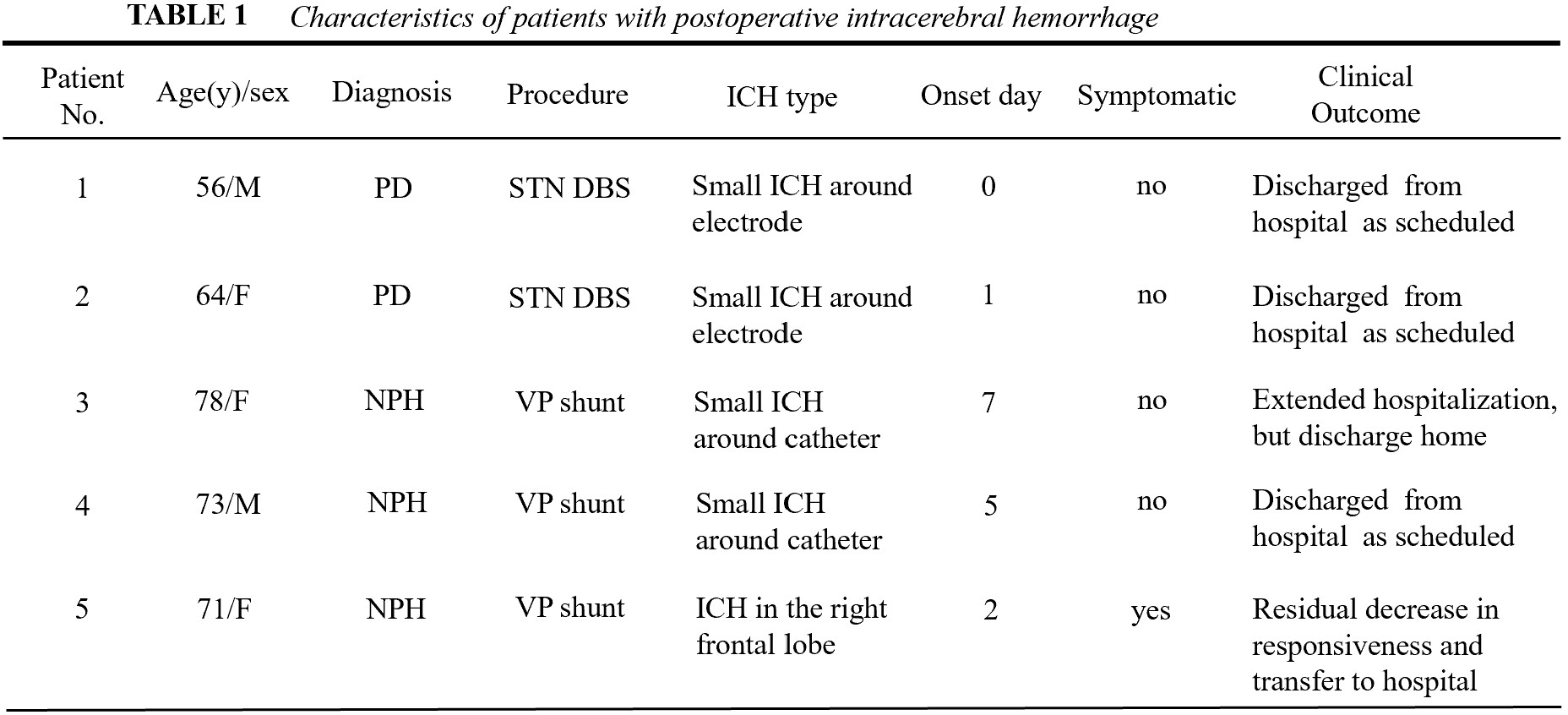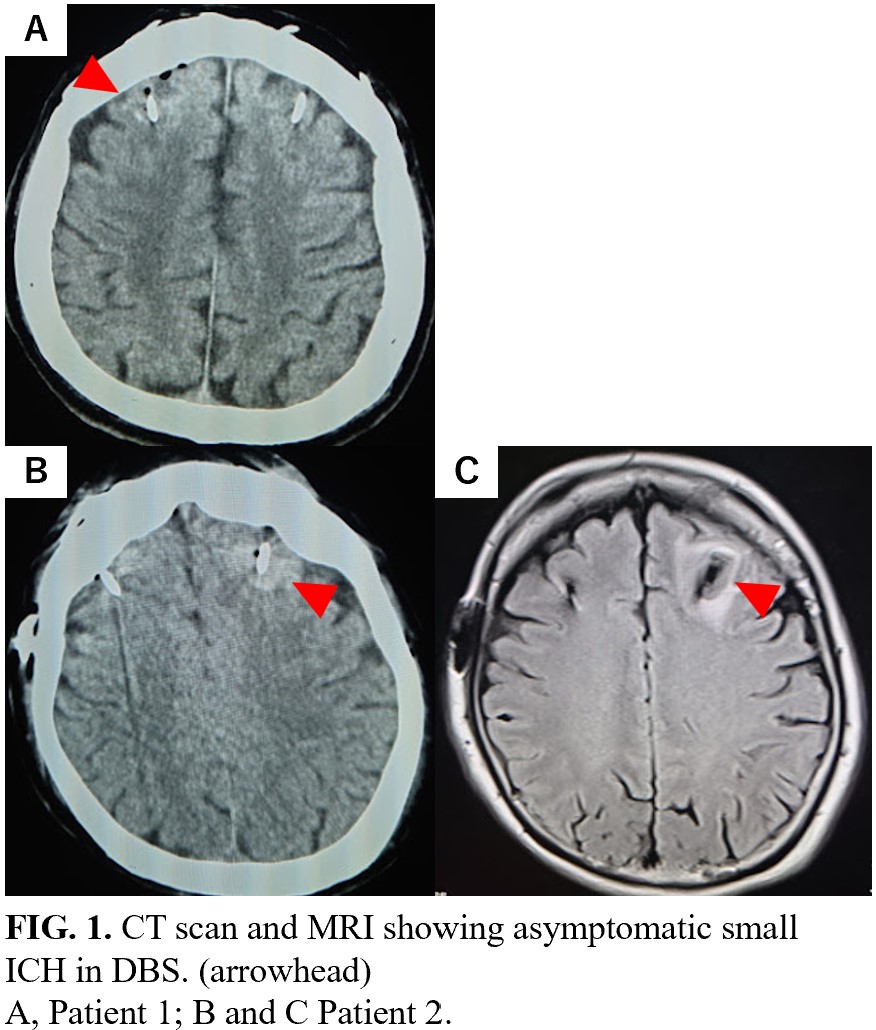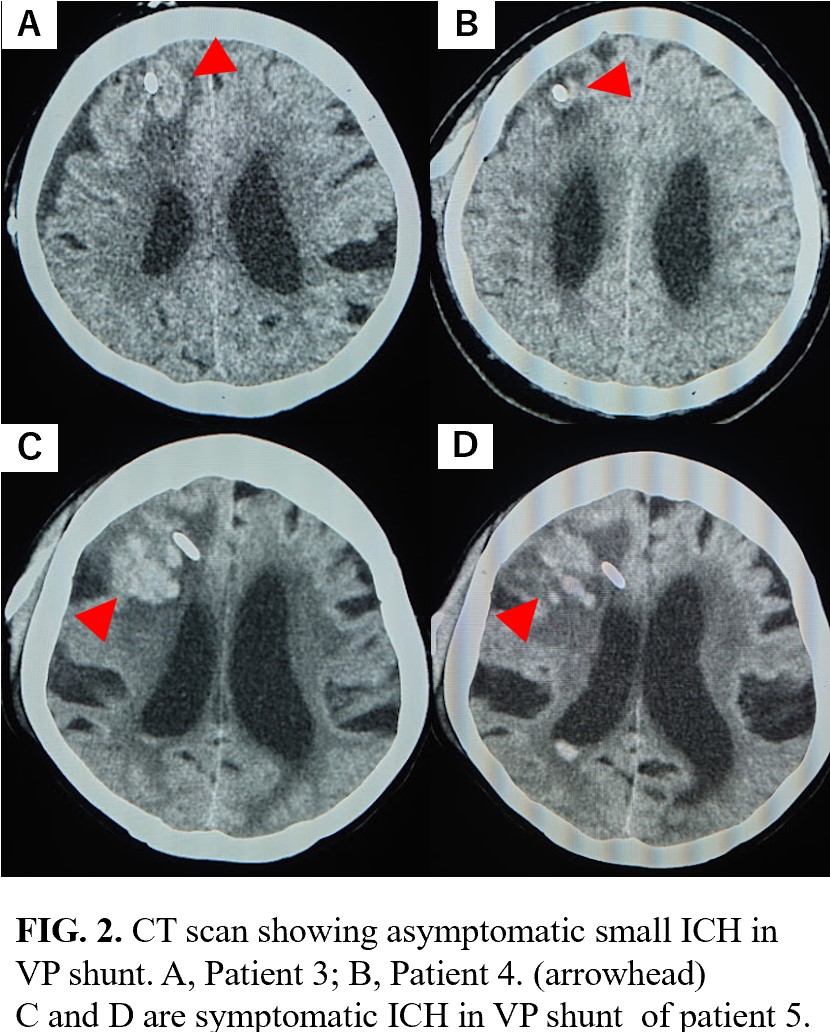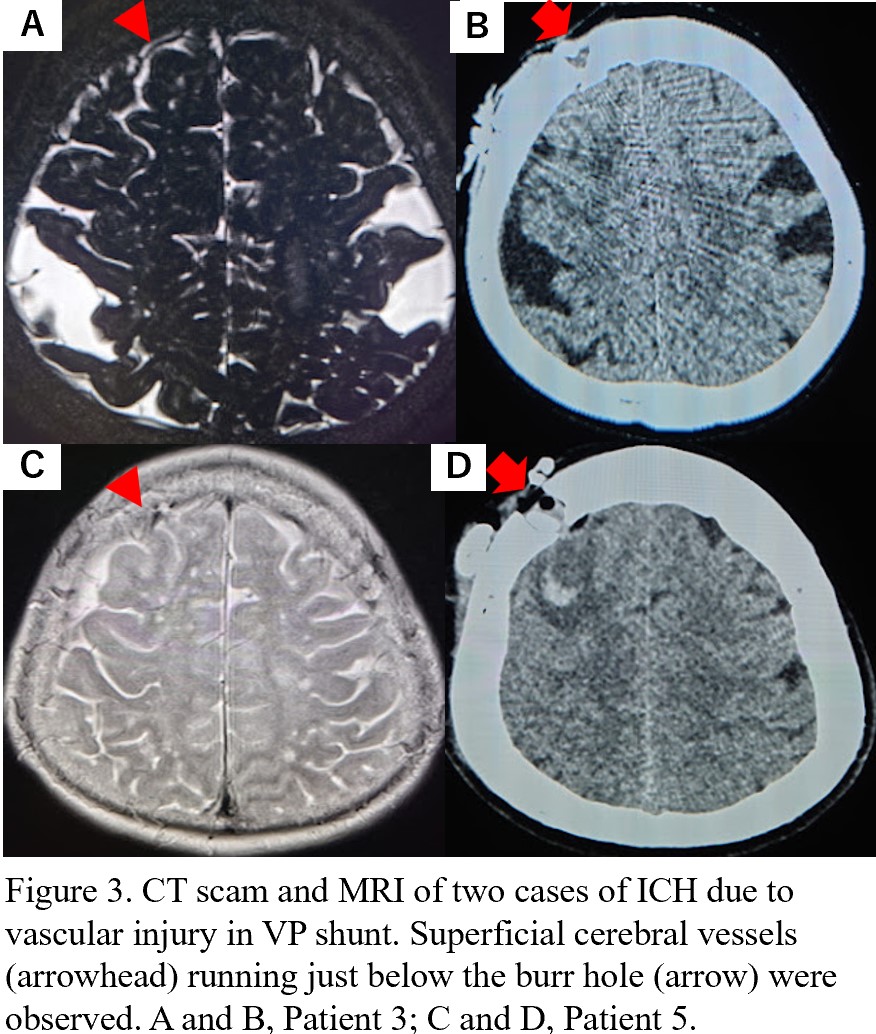Category: Surgical Therapy: Parkinson's Disease
Objective: We compared the occurrence of postoperative intracerebral hemorrhage (ICH) in deep brain stimulation (DBS) and ventricle peritoneal (VP) shunt at our institution.
Background: Although detailed electrode trajectory planning using magnetic resonance imaging (MRI) is important to avoid ICH during DBS, ICH can still occur. On the other hand, VP shunt, which is similar in that it is a procedure to puncture the brain, usually does not involve rigorous preoperative trajectory planning, and is expected to be more prone to ICH than DBS.
Method: From January 2021 to December 2022, subthalamic (STN) DBS for Parkinson’s disease (PD) and VP shunt for normal pressure hydrocephalus (NPH) at our institution were included. For DBS, MRI was used for adequate trajectory planning. For VP shunt, however, MRI-based trajectory planning was not performed, and a catheter was placed in the anterior horn of the lateral ventricle using anatomical landmarks. The occurrence of postoperative ICH was investigated in both cases.
Results: Eleven PD patients underwent STN DBS with 21 electrodes implanted and VP shunt was performed on 12 patients with NPH. Five of these patients had ICH (Table 1). In DBS, there was no symptomatic ICH and 2 of 11 patients had small asymptomatic ICH (Fig. 1); in VP shunts, 1 of 12 patients had symptomatic ICH (8.3%) and 2 had asymptomatic ICH (Fig. 2). Two of the ICH in the VP shunt were caused by injury to superficial cerebral vessels, which could have been avoided if trajectory planning were considered (Fig. 3). In recent reports, the rate of symptomatic ICH in DBS has ranged from 0.6% to 2.1% per electrode, which is low considering that the rate of ICH in VP shunt has been reported to range from 1.6% to 23.7%. Systolic blood pressure (BP) during surgery is reported be a risk factor for the occurrence of ICH in DBS, therefore strict BP control during surgery is also important. Symptomatic ICH was not observed in DBS at our institution, possibly due to preoperative trajectory planning and intraoperative BP control.
Conclusion: The postoperative ICH rate was lower in DBS compared to VP shunt. To minimize the incidence of postoperative ICH in DBS, trajectory planning by preoperative MRI should be performed.
To cite this abstract in AMA style:
T. Nakura, S. Taguchi, H. Saiki, S. Miyachi, M. Douyuu. Preoperative trajectory planning is important to minimize intracerebral hemorrhage after deep brain stimulation, in comparison with ventricle peritoneal shunt. [abstract]. Mov Disord. 2023; 38 (suppl 1). https://www.mdsabstracts.org/abstract/preoperative-trajectory-planning-is-important-to-minimize-intracerebral-hemorrhage-after-deep-brain-stimulation-in-comparison-with-ventricle-peritoneal-shunt/. Accessed December 29, 2025.« Back to 2023 International Congress
MDS Abstracts - https://www.mdsabstracts.org/abstract/preoperative-trajectory-planning-is-important-to-minimize-intracerebral-hemorrhage-after-deep-brain-stimulation-in-comparison-with-ventricle-peritoneal-shunt/




